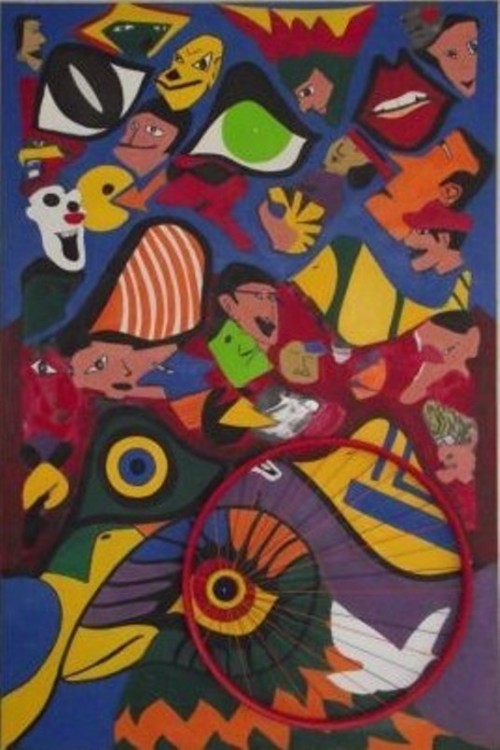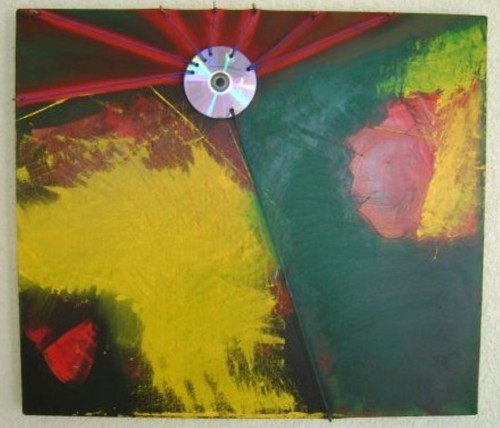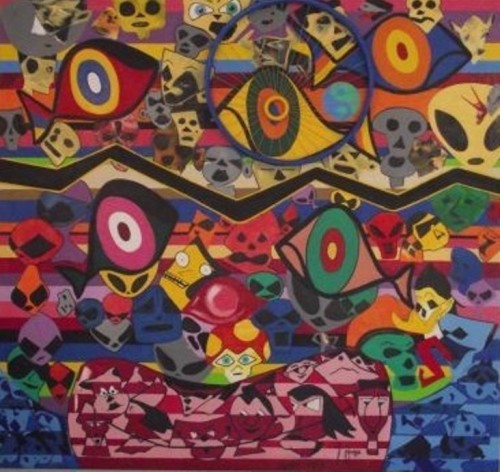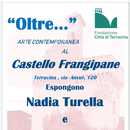Ivan Garza Pedroarena,
Cyclist and
Artist of
Oaxaca (Mexico).
"* In the course of history, the marriage between art and sport has existed since the early days. Di Artists who have chosen to represent scenes of ludo in their in their paintings and sculptures, there have been several, some well known others less well known, or even anonimi.Anticamente, the first scenes of the sport or those that can be defined as real workouts (in these cases always linked to the war) were represented by the masters of the court, which affrescavano the royal palaces. the first evidence of these works date back to 'Assyria, to' Egypt and the civilization minoica.I subject of the representations focused on scenes of swimming, races arc or as in the fresco of Knossos, a painting come to the present day, tells us of an acrobat skinned brunette, aided by two daughters, his assistants, engages in the bull jumping. Advancing through the centuries these representations also found the authors note, just think of Myron and his "Discus Thrower", or the "Diadumenus" Policleto, which affirmed in ancient Greece .More forward Rome has left us testimonials with its mosaics dedicated to games such as "desultores." The Middle Ages witnessed by the prints of Lucas Cranach the Elder and his jousting in the 18th century, Antonie van Dyck, depicts Charles I of England engaged in his favorite sport hunting. And so by the time there are many examples of this type of work. But the real consecration of script-this is done in France in the 19th century, with the Impressionists include "Luncheon of the Boating Party" by Auguste Renoir, Degas in a work like "The car races," until landing to Henri de Toulouse-Lautrec, who was the first to be ipirò the "bicycle" and the new mechanical means of increasing popolarità.E from then on in the modern era have been multiple representations in the world of sports.
But let's stop here. Let's look at the art of painter and sculptor Ivan Garza, cyclist and surrealist. He says of himself and of his art: I think my method is empirical ... A phrase that says it all about his insights, and his unique way of approaching art. It 'an artist with a great passion: the ciclismo.Sport following assiduously, but above all that practice! And this is what makes the difference and artistic setting it apart from its predecessors, namely those who up to now and over the millennia have ventured to represent the sport in the art world, remaining purely theorists. On the contrary he is an investigator. League this habit inextricably to his art and imprints in his paintings. Represents his inner, personal extolling his vision, feelings, emotions, ups and downs and these, try the field. This is evident by observing its particular paintings. In most of his works, there is the insertion of a three-dimensional often spoked wheel, the wheel of a bicycle. Someone observation might say: What've seen! remembering the work of Marcel Duchamp, in fact the "Bicycle Wheel". Certainly, as long as they say, a wheel is a wheel. But there is a fundamental inequality between the wheels of Ivan and that of Duchamp, the latter was a purely cognitive. The wheels of Garza, they know the sweat and toil, are impregnated with rain and dust, learn the bumps in the road, are true. As they are also genuine feelings, that the artist has experienced firsthand along the roadways of the world and dhe tells us in an extraordinary way, through its unique and colorful works. "
F.B.W
* See. Sport and art in the history of Marco Bussagli - Encyclopedia Treccani .it







